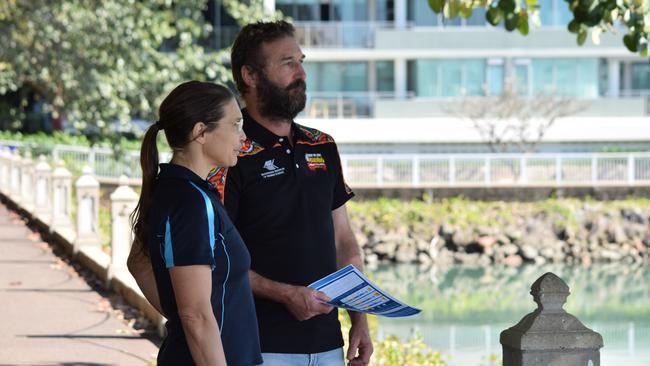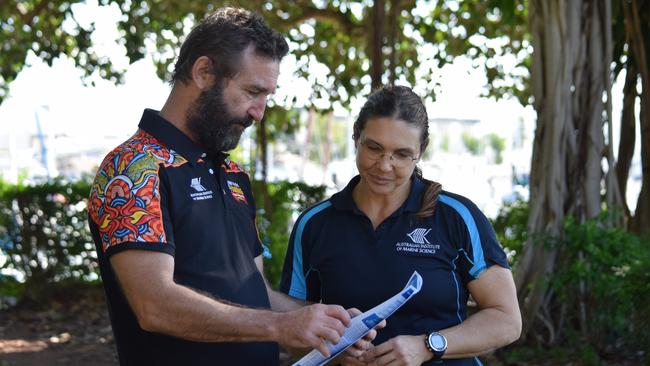AIMS report shows latest on health of Great Barrier Reef
The latest report from the Australian Institute of Marine Science shows a positive trend in coral cover across all three regions of the Great Barrier Reef, yet scientists caution that these findings come with a significant warning.

News
Don't miss out on the headlines from News. Followed categories will be added to My News.
The latest report from the Australian Institute of Marine Science shows coral cover has increased in all three regions of the Great Barrier Reef, but note the latest findings do come with a caution.
Surveys conducted between August 2023 and June 2024 across 94 different reefs on Australia’s east coast indicate an increase in coral cover, but the true impact of recent events is yet to be seen.
Townsville, which is included in the Central region of the Great Barrier Reef, recorded an average hard coral coverage of 34 per cent, up from 30.7 per cent on the previous year.
These results are part of the Long-Term Monitoring Study, released this week, with many surveys conducted before and during the mass bleaching event at the start of 2024.
Scientists warn that next year’s study will reveal the full impact of this event.
Running for the past 38 years, the Long-Term Monitoring Program has documented the health of the Reef, which has experienced significant fluctuations, especially over the last 15 years.
Reef fish ecologist Dr. Daniela Ceccarelli emphasised the importance of ongoing surveys to understand the reef’s health comprehensively.
“Our surveys were mostly completed before the major impacts that we saw this summer and those impacts include two cyclones, Jasper and Kirrily, and the most serious and widespread heatwave that causes mass coral bleaching that’s ever been recorded on the Great Barrier Reef,” she said.

“The latest report describes coral cover which is a measure of reef health. It basically says how much living coral is on the reef and it’s a great indicator because obviously the reef is made of coral.”
“More coral is generally better than less, this year our report shows that in all three regions of the Great Barrier Reef coral cover has slightly gone up, which is promising.”
Impacts of recent events
Dr Ceccarelli said outbreaks of the invasive crown-of-thorns starfish were also impacting the health of the reef and the amount of coral cover.
She said that with the next round or surveys kicking off in September it will be interesting to see what corals have recovered and which have died.
“We know that cycles crossed the coast around here and so those reefs were definitely impacted by Cyclone Kirrily,” she said.
“We saw some damage on some reefs. We did see that some reefs escaped damage which was good news. The bleaching was definitely severe and intense here on these reefs, but it wasn’t as lengthy as the more severe bleaching that we saw down south.”

“The story ends on a bit of a cliffhanger because we haven’t yet been able to get back in the water and resurvey the reefs after the bleaching.”
Dr Ceccarelli said like how humans recovered from heatstroke, some corals can bounce back from bleaching.
“We need to understand that bleaching is not an immediate impact,” she said.
“Bleached coral can either survive and recover, it’s a bit like heatstroke for us, or they can die. That can take months to play out.”
“Even out here on the reefs of Townsville, it’s only just finished playing itself out, which survive and which die.”
Climate change the ‘biggest threat’
Research team leader Dr Mike Emslie said the biggest threat to the health of the Great Barrier Reef continues to be climate change.
“We know that increasing water temperatures are driving mass coral bleaching events from marine heatwaves,” he said.
“We’ve seen probably the most extensive and serious bleaching event unfold over this summer and they are now occurring at almost biannual frequency.”
“The increasing frequency is the greatest threat to the Great Barrier Reef.”
Dr Emslie said while the Reef was a ‘resilient system’ that can recover and bounce back from disturbances, but the resilience has its limits that will be tested in coming years.
More Coverage
Originally published as AIMS report shows latest on health of Great Barrier Reef





